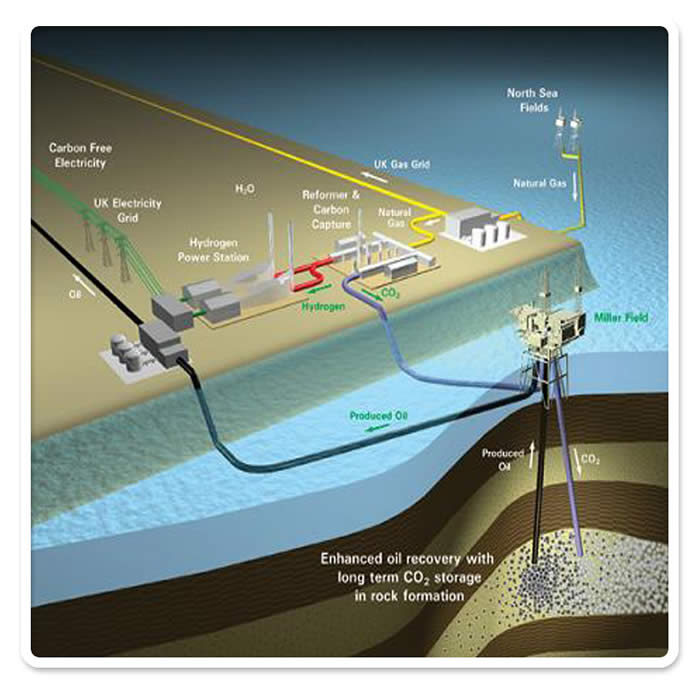Carbon sequestration
 Liquefied carbon dixoide would be injected into water depths greater than 3 000 m, where the circulation of the ocean would prevent it returning to the atmosphere for several centuries. It is likely that high concentrations of carbon dixoide at injection points would have the most profound effects on deep-sea organisms. As currents disperse concentrated carbon dixoide, the lethal effects would most likely diminish with distance from the source. Liquefied carbon dixoide would be injected into water depths greater than 3 000 m, where the circulation of the ocean would prevent it returning to the atmosphere for several centuries. It is likely that high concentrations of carbon dixoide at injection points would have the most profound effects on deep-sea organisms. As currents disperse concentrated carbon dixoide, the lethal effects would most likely diminish with distance from the source.
In situ experiments show the effects on deep-sea dwelling organisms can be profound. Benthic infauna and epifauna suffer respiratory stress and direct mortality from acidosis. Mobile species may be able to move away from the carbon dixoide source and thus only suffer temporary effects such as loss of consciousness. Longer-term exposure may be lethal for mobile species, but the observed effects do vary widely between species. The benefits gained by storing carbon dioxide in this way needs to be assessed in relation to the hazards it poses to deep-sea life.

|
